Abstract
The first step in the fusion of two phospholipid membranes culminates in the aggregation of the two lipid bilayers. We have used a custom-built fluorimeter to detect multilamellar vesicles (liposomes) containing the fluorescent dye, 6-carboxyfluorescein (6-CF), bound to a planar lipid bilayer (BLM). Liposomes were added to one side of the BLM, and unbound vesicles were perfused out. This left a residual fluorescence from the BLM, but only when the membranes contained anionic lipids, and then only when millimolar levels of calcium were present. This residual fluorescence was consistently detected only when calcium was included in the buffer during the perfusion. This residual fluorescence originated from liposomes bound to the BLM. Breaking the BLM or lysing the adsorbed vesicles with distilled water abolished it. free 6-CF and/or calcium in the absence of liposomes resulted in no residual fluorescence. No residual fluorescence was detected when both the liposomes and the BLM were composed entirely of zwitterionic lipids. This was found to result from the insensitivity of the fluorimeter to a small number of liposomes adsorbed to the BLM. For this system, we conclude that calcium is necessary for both the initiation and maintenance of the state in which the vesicle membrane is bound to the planar bilayer when the membranes contain negatively charged lipids. This attachment is stronger than the interaction between zwitterionic membranes.
Full text
PDF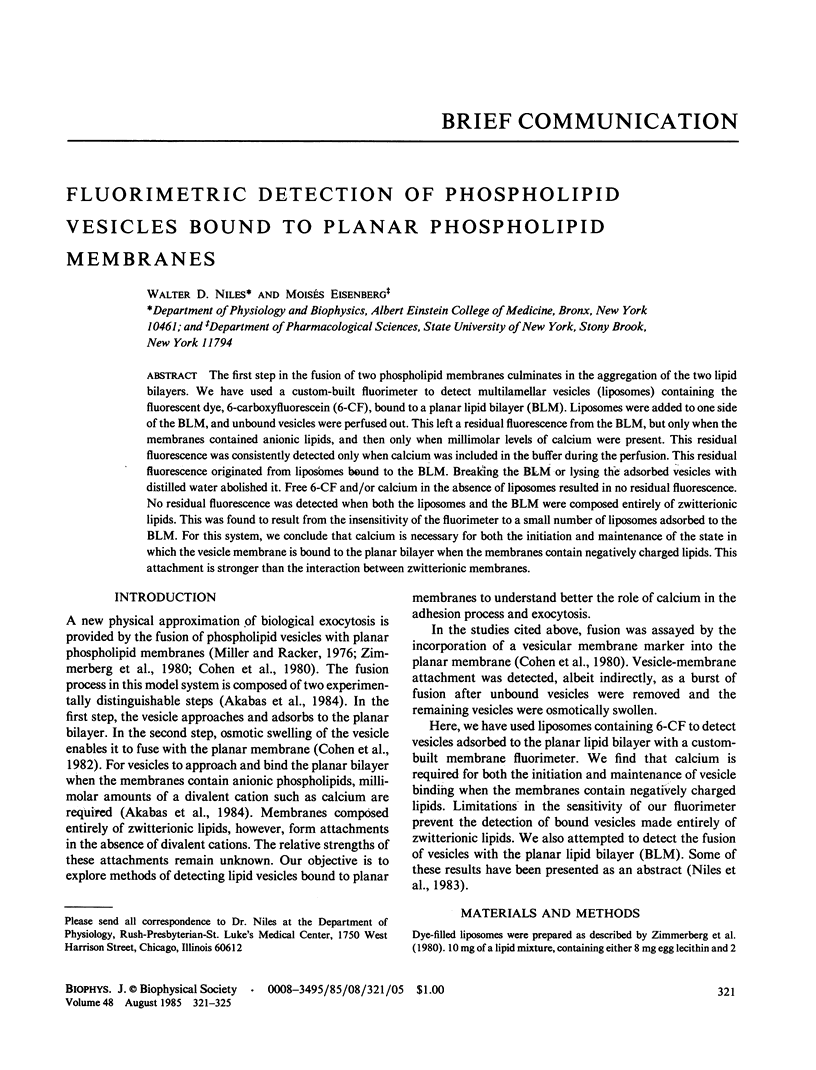
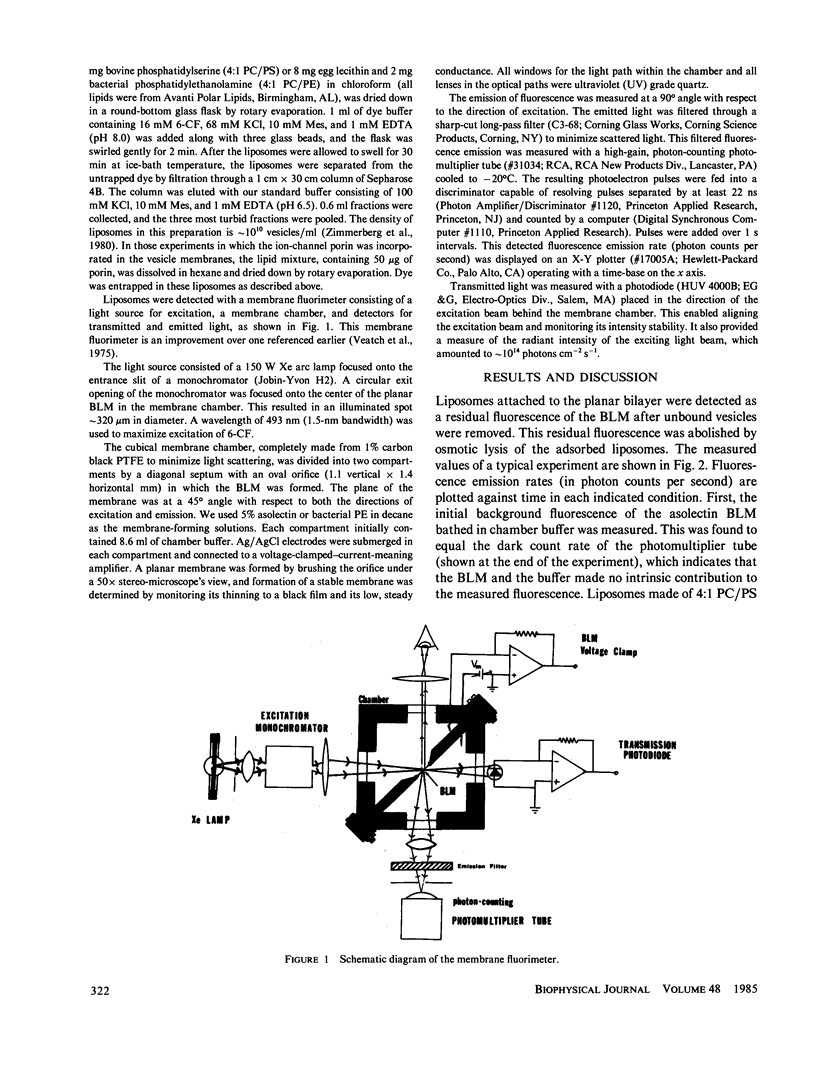
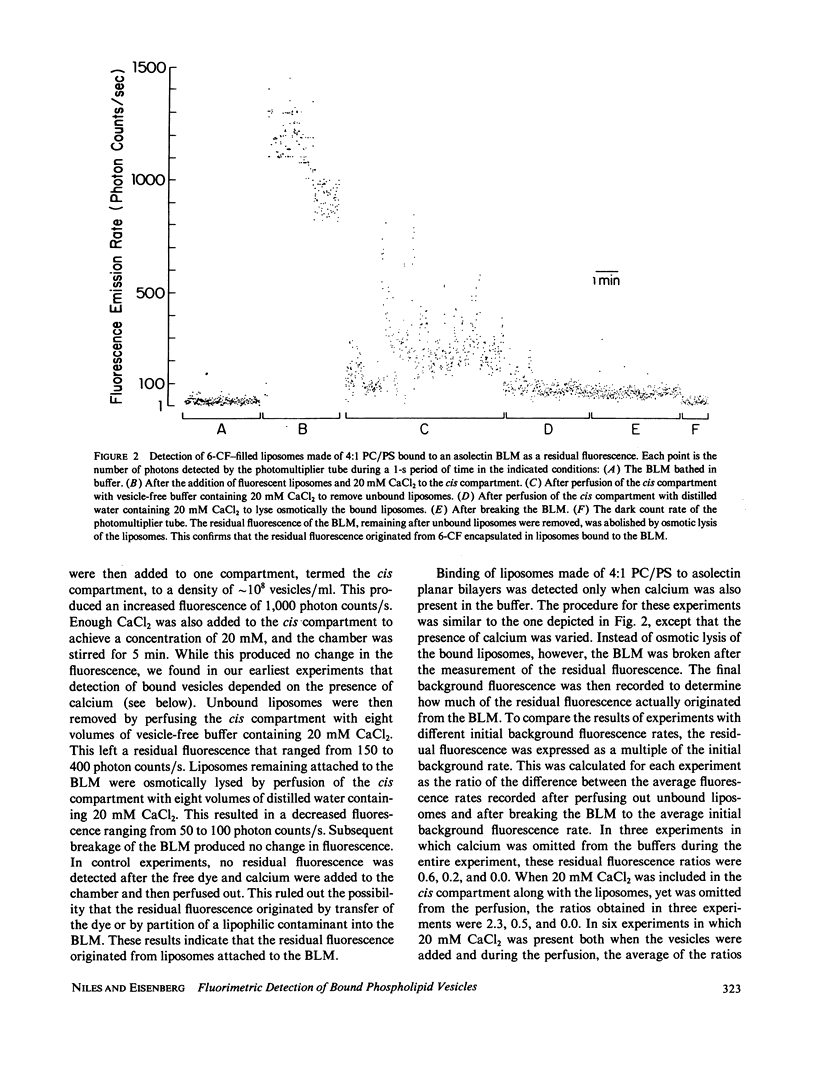
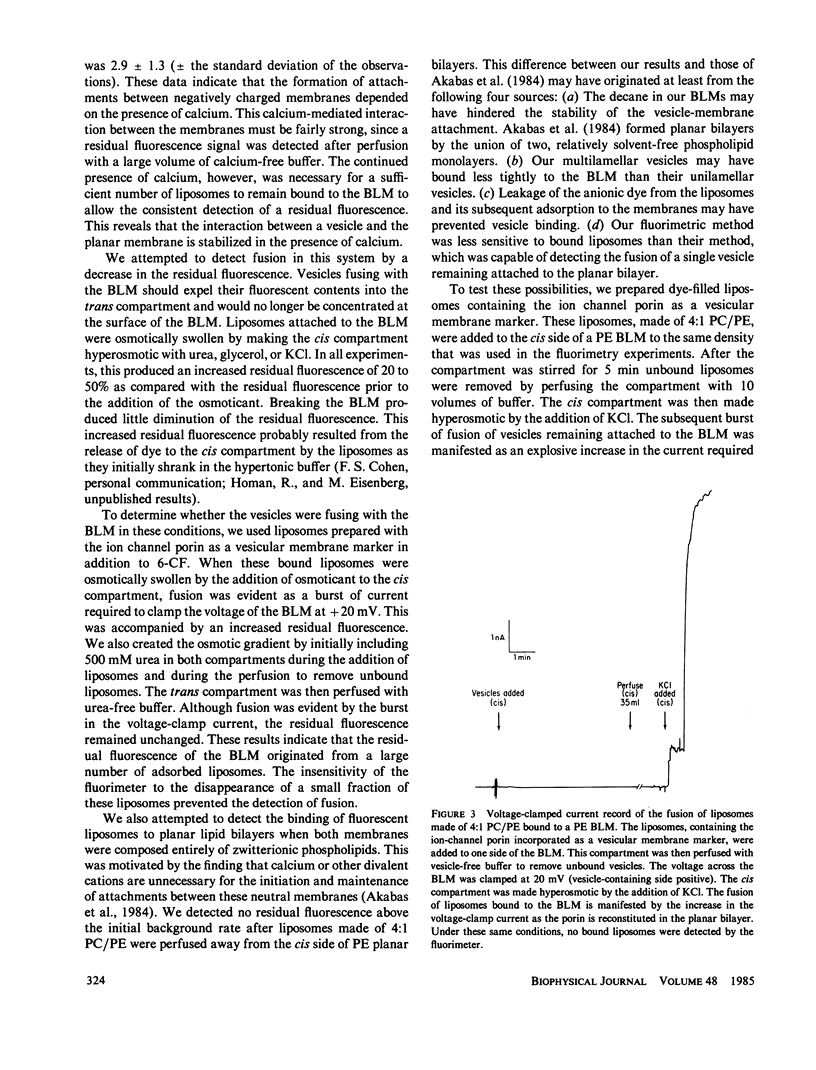
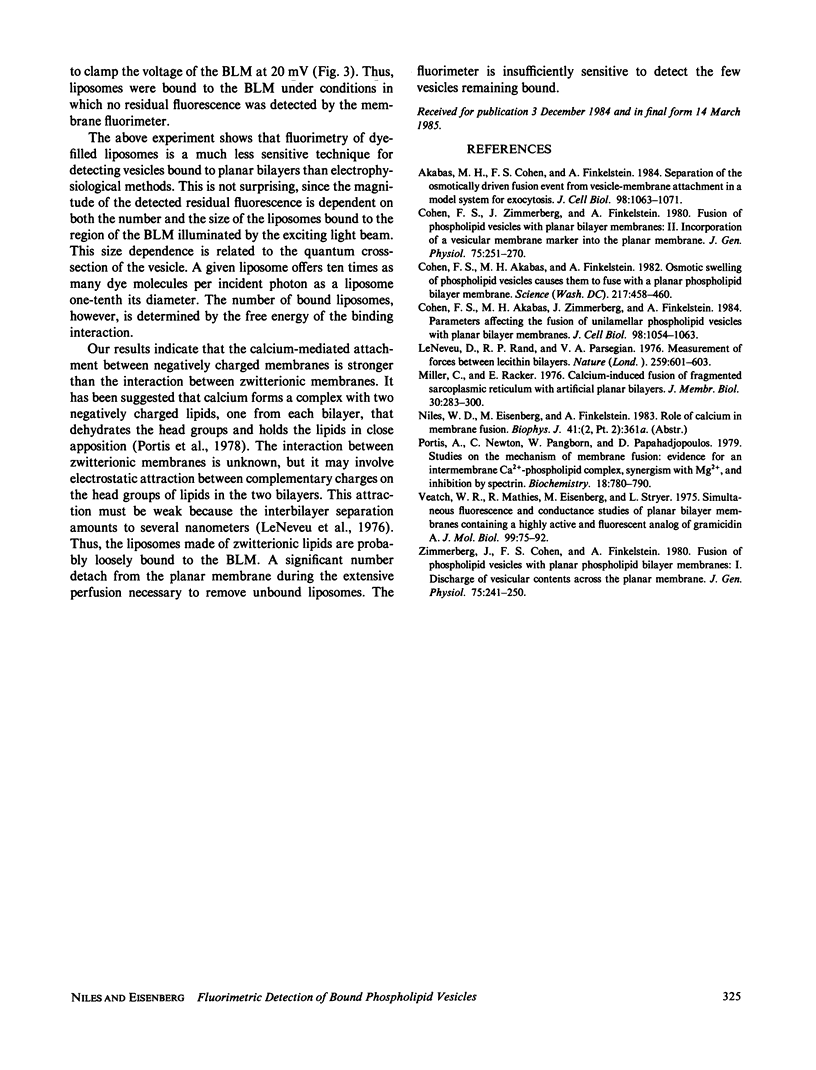
Selected References
These references are in PubMed. This may not be the complete list of references from this article.
- Akabas M. H., Cohen F. S., Finkelstein A. Separation of the osmotically driven fusion event from vesicle-planar membrane attachment in a model system for exocytosis. J Cell Biol. 1984 Mar;98(3):1063–1071. doi: 10.1083/jcb.98.3.1063. [DOI] [PMC free article] [PubMed] [Google Scholar]
- Cohen F. S., Akabas M. H., Finkelstein A. Osmotic swelling of phospholipid vesicles causes them to fuse with a planar phospholipid bilayer membrane. Science. 1982 Jul 30;217(4558):458–460. doi: 10.1126/science.6283637. [DOI] [PubMed] [Google Scholar]
- Cohen F. S., Akabas M. H., Zimmerberg J., Finkelstein A. Parameters affecting the fusion of unilamellar phospholipid vesicles with planar bilayer membranes. J Cell Biol. 1984 Mar;98(3):1054–1062. doi: 10.1083/jcb.98.3.1054. [DOI] [PMC free article] [PubMed] [Google Scholar]
- Cohen F. S., Zimmerberg J., Finkelstein A. Fusion of phospholipid vesicles with planar phospholipid bilayer membranes. II. Incorporation of a vesicular membrane marker into the planar membrane. J Gen Physiol. 1980 Mar;75(3):251–270. doi: 10.1085/jgp.75.3.251. [DOI] [PMC free article] [PubMed] [Google Scholar]
- LeNeveu D. M., Rand R. P., Parsegian V. A. Measurement of forces between lecithin bilayers. Nature. 1976 Feb 19;259(5544):601–603. doi: 10.1038/259601a0. [DOI] [PubMed] [Google Scholar]
- Miller C., Racker E. Ca++-induced fusion of fragmented sarcoplasmic reticulum with artificial planar bilayers. J Membr Biol. 1976;30(3):283–300. doi: 10.1007/BF01869673. [DOI] [PubMed] [Google Scholar]
- Portis A., Newton C., Pangborn W., Papahadjopoulos D. Studies on the mechanism of membrane fusion: evidence for an intermembrane Ca2+-phospholipid complex, synergism with Mg2+, and inhibition by spectrin. Biochemistry. 1979 Mar 6;18(5):780–790. doi: 10.1021/bi00572a007. [DOI] [PubMed] [Google Scholar]
- Veatch W. R., Mathies R., Eisenberg M., Stryer L. Simultaneous fluorescence and conductance studies of planar bilayer membranes containing a highly active and fluorescent analog of gramicidin A. J Mol Biol. 1975 Nov 25;99(1):75–92. doi: 10.1016/s0022-2836(75)80160-4. [DOI] [PubMed] [Google Scholar]
- Zimmerberg J., Cohen F. S., Finkelstein A. Fusion of phospholipid vesicles with planar phospholipid bilayer membranes. I. Discharge of vesicular contents across the planar membrane. J Gen Physiol. 1980 Mar;75(3):241–250. doi: 10.1085/jgp.75.3.241. [DOI] [PMC free article] [PubMed] [Google Scholar]


